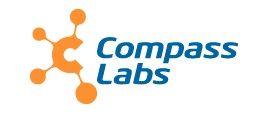![]() A Q&A with StopTheHacker CEO Peter Jensen. The San Francisco–based company was founded in January of 2009. They recently raised $1.1 million in Seed funding.
A Q&A with StopTheHacker CEO Peter Jensen. The San Francisco–based company was founded in January of 2009. They recently raised $1.1 million in Seed funding.
SUB: Please describe what StopTheHacker is, and the value proposition you bring to web security.
Jensen: Approximately 6,000 websites get blacklisted daily, potentially creating lost revenue for website owners when a website is down, and loss of confidence and reputation of visitors.
These websites mostly get blacklisted because hackers inject malicious code. Websites get hacked because they are vulnerable as companies are spending less time scanning and finding vulnerabilities since they can’t keep up with them anyway. Instead, companies are moving their focus on scanning their websites daily or hourly to find out if they are actually infected so they can act immediately.
Traditional anti-virus scans websites using signature-based approaches and only catches 50 percent of the dynamically-changed and intelligent-adjusted malicious codes. StopTheHacker’s Artificial Intelligence (AI)based engine and advanced machine-based learning techniques can catch these never before seen malware.
SUB: What are your target markets?
Jensen: Our target markets are website owners all over the world. We started selling directly to all English speaking countries, but just released German as the first international version towards our internationalization program. We have an indirect sales strategy selling through web hosters and value-added security resellers to penetrate the market.
A few months ago, StopTheHacker’s services began selling in the United States. In the last few months, we stepped into Europe by partnering with the leading European Hosting company—Host Europe Group.
SUB: Who do you consider to be your competition?
Jensen: Website security is a new and growing field. It is often lumped into the categories of anti-virus, web-scanning, security vulnerability management, or WAF, but website security is its own category of protection with different competitors.
In fact, there are only a few companies in this fairly new space of pure website protection. The primary vendors are Sucuri, Amorize, Sitelock, and Dasient—recently acquired by Twitter.
SUB: What differentiates StopTheHacker from the competition?
Jensen: Many of StopTheHacker’s competitors answer the question, “am I vulnerable” and focus on the traditional approach of signature based protection and manual cleanings. StopTheHacker takes a different approach. It answers the question—am I infected? It provides a solution that addresses this problem.
StopTheHacker leads the way with its sophisticated AI engine, using machine learning techniques to catch 50 percent more malware—even never before seen malware—than everyone else and an automated process of malware cleanup where the malware is automatically removed so the customer doesn’t have to worry about it.
In addition StopTheHacker delivers by far the most advanced features set, including Facebook protection.
SUB: When was the company founded and what were the first steps you took in establishing it?
Jensen: The company was founded in January 2009, focused on R&D. The first steps we took were to spend the grants we received from the National Science Foundation to develop and commercialize the artificial intelligence engine that our co-founder Anirban Bannerjee invented during his PhD research. This engine allows us to catch never before seen malware, which is becoming increasingly important as traditional signature based and anti-virus based security solutions can’t keep up with the changing threat landscape.
In the last few months, we commercially launched the company.
SUB: What was the inspiration behind the idea for StopTheHacker? Was there an “aha” moment, or was the idea more gradual in developing?
Jensen: One interesting moment was when co-founder Anirban Bannerjee was analyzing websites that distribute copyright content for peer-to-peer networks. He found that a significant number of them seemed to harbor malware. This was followed up with more analysis into the types of web-malware prevalent on websites, leading to building of an early prototype that could detect web-malware.
SUB: What have the most significant obstacles been so far to building the company?
Jensen: The biggest obstacle is reach and awareness. We know companies are being infected and blacklisted all the time and we know we have the solution, but the question has always been: how do we reach the owners of today’s 100 million websites and tell them that, 1.) they risk getting infected and blacklisted, and 2.) we have an affordable solution to fix the problem?
SUB: You recently raised $1.1 million in Seed funding. What are your plans for the funds?
Jensen: We plan on using this funding to help forward StopTheHacker’s marketing and sales efforts to engage with new partners worldwide. We will also invest in R&D to stay ahead of the competition.
Finally, the funding will help with fostering partnerships with other organizations including StopBadware.org, a non-profit organization whose charter is to fight malware online.
SUB: Do you plan to raise more outside funding in the near future?
Jensen: Not at the moment. We will let you know when we do.
SUB: What are your goals for StopTheHacker over the next year or so?
Jensen: Our goal for the next year is to find new partners and partner channels all over the world. We will keep you posted on our future plans when we can say more.
StopTheHacker – www.stopthehacker.com











